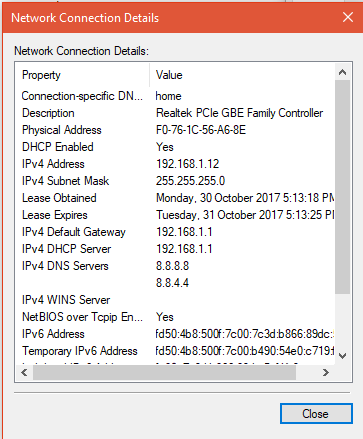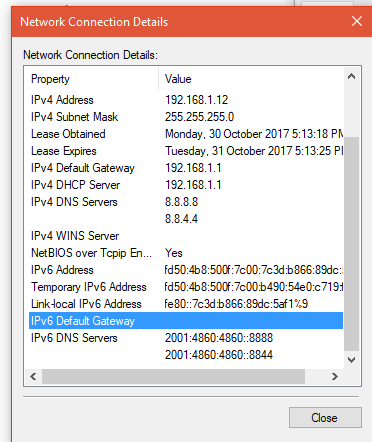When you say "connecting to the same network on the same computer works fine" do you mean that sometimes it works and sometimes it does not, or do you mean it works fine using Wi-Fi? I suspect you mean that Wi-Fi is fine.
If it works on Wi-Fi, but has problems on Ethernet, then Windows will automatically switch to Ethernet when it recognises an Ethernet connection is present. This will explain "as soon as I plug the ethernet cable in it gets stuffed up and has a little yellow caution sign" if Ethernet is not working.
Please do the following:
1) Right click on the icon showing the yellow caution sign, which I suspect is somewhere near the clock at the bottom right of the screen.
2) Select "Open Network and Sharing Center".
3) Select the Ethernet interface in the N&SC window.
4) Click on the Details button in the Status window that should have opened.
5) Record the details about the interface (see below).
6) Repeat this with the Wi-Fi interface from step 3 above.
7) Edit your original question to add an update with this extra information.
I will come back to this question later to see what you have added.
Update:
Thanks for adding the extra detail. I must admit that all looks perfectly normal to me, with the exception that you have correctly set up Google DNS servers manually, rather than using the automatic setting, which would normally be 192.168.1.1 when connected to your router.
At least the settings should work.
I'm wondering if this is a Windows 10 update issue. I have an Acer desktop that has both Ethernet and Wi-Fi connectivity. I bought it a few months before Windows 10 first appeared, and I got very used to Windows 8.1 Pro. However, when Microsoft did their free upgrade program to Windows 10, I created a full backup of C:, then allowed the upgrade to proceed. Although I had established that Wi-Fi worked with 8.1, it was configured only to use the Ethernet connection. After the upgrade, there were four significant problems: one, Windows Media Center was removed (it warned me that this would happen); two, for some reason it uninstalled my anti-virus without any warning; three it totally messed up the start menu; and four, Ethernet no longer worked. Fortunately, I could activate Windows 10 using Wi-Fi. After a few days trying to get to grips with Windows 10, I decided I did not like the way I no longer had control of some of the features in the PC so I restored my C: backup and the PC has been running 8.1 Pro again for the last two years.
Now, if the problem first appeared between about the 8th to 16th of a month, I suspect that Windows 10 may have installed an update to the Ethernet driver, which is not fully compatible with the Lenovo hardware. I have a Lenovo laptop, and when I first tried to go to Windows 10 on that the video driver stopped working completely. I had to do an update of the driver before 10 would work. That is also back at 8.1. But like the Acer, it has registered its Windows 10 digital entitlement.
If you can make a backup of C:. That would be a good starting point. Failing that, make sure System Restore is turned on for C: and create a restore point. Then go into Device Manager and uninstall the driver for the Ethernet adapter. Then do a reboot, when it should reinstall the driver. See if that fixes it.
If not, then go to the Lenovo download site at
https://pcsupport.lenovo.com/.../downloads
and download the Windows 10 LAN driver. It's about 6 MB in size. Install this driver as an upgrade to the current one.
If the situation is no better, then you can restore the restore point or C: image to get back to where you are now.
If there's still a problem, then I think it is a case of connecting it to a different router with a different cable to see if it is a problem just connecting to your router. Beyond that, I'm not sure what to recommend.
One other question. Does the router have Gigabit Ethernet or is it only 100 Mbps? If the router is Gigabit, it might be worth seeing if the Ethernet port can be configured only to use 100 Mbps. I'm not sure why this should affect DNS operation when DHCP seems to be working properly to get the address.


